An Alarm Receiving Centre (ARC) is a specialized facility staffed by trained professionals who monitor security systems 24/7. In some places, it is also called as Central Monitoring Station (CMS). Integration with an ARC or CMS is a key feature of a professional security system. To offer enhanced protection and peace of mind, intruder alarm device manufacturers often design their devices to connect with ARCs and CMS, so that homeowners can gain access to professional monitoring services, rapid response times, and reduced false alarms.

This article will explain what an Alarm Receiving Centre (ARC) is, how it works, how to connect Roombanker home security alarm system to an ARC, and methods to minimize false alarms, among other topics.
What is Alarm Receiving Centre (ARC)?
Alarm Receiving Centres (ARCs) play a vital role in the security industry. It is a 24/7 monitoring facility that receives, processes, and responds to alarm signals from security systems of various residential and commercial buildings, including intrusion alarms, fire alarms, and medical alarms. When an alarm is triggered, the ARC receives and processes the signal, taking appropriate actions to protect the property.
How Does an ARC Work?
- Receive Alarm Signals: ARCs receive alarm signals from various security systems via dedicated lines, telephone lines, the Internet, or cellular networks.
- Verify Alarms: ARCs verify received alarms according to pre-set protocols and procedures to determine their authenticity and rule out false alarms.
- Rapid Response: In case of a confirmed intrusion, fire, or medical emergency, the ARC immediately notify relevant personnel, such as the owner, emergency contacts, security personnel, or the police.
- Coordinate Emergency Response: ARCs can coordinate appropriate emergency responses, such as dispatching security personnel or contacting the police, fire brigade, or ambulance, depending on the type and severity of the alarm.
- Record and Report: ARCs record all received alarm information, including alarm type, time, location, handling process, and results, and generate detailed reports.
What Will Happen If There is a Real Intrusion Exist? Will ARC Always Contact Police?
When an ARC receives alarm information, whether or not they contact the police depends on various factors. The police may not always be contacted. The main factors considered are:
- Alarm Types and Severity: Different alarm types have different processing procedures. For intrusion alarms, ARCs typically try to contact the owner or emergency contact first to confirm an intrusion. If the situation cannot be confirmed as safe or the owner indicates the need for police involvement, the ARC will contact the police. For emergencies like fire or medical alarms, ARCs usually contact the fire department or ambulance directly.
- User Agreement and Instructions: When signing a contract with an ARC service company, users can specify different alarm response plans. For example, users may choose to have the police contacted only for certain types of alarms or set a threshold for losses that would trigger a police response.
- Alarm Verification: ARCs verify alarm information to exclude false alarms. They check the reliability of the alarm signal source, whether multiple sensors were triggered simultaneously, and if there is video surveillance footage to support the alarm. If the authenticity of the alarm cannot be confirmed, the ARC may not contact the police immediately.
- Local Laws and Regulations: Some areas have mandatory reporting requirements for specific types of alarms. For example, fire alarms may need to be reported to the fire department immediately in many locations.
How to Connect Intruder Alarm System with ARC?
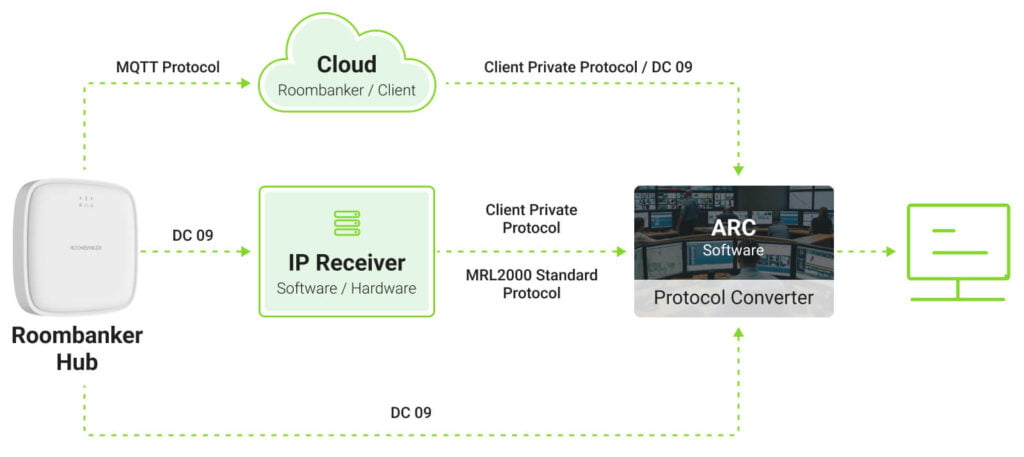
Cloud-Based Transmission:
The home security hub transmits data in MQTT format to the cloud server. The server then converts this information into ARC’s proprietary DC 09 protocol and transmits it to the ARC platform.
Direct Transmission to IP Receiver with Protocol Conversion:
The home security hub sends data in DC 09 format directly to the IP receiver. The IP receiver acts as an intermediary, converting the DC 09 format into ARC’s specific protocol or MRL2000 standard protocol. The converted data is then sent to the ARC platform for processing.
Direct Protocol Conversion:
The home security hub sends data in DC 09 format directly to ARC’s protocol converter. The protocol converter translates the data into ARC’s internal language and sends it directly to the ARC platform for real-time monitoring.
These three methods ensure that alarm and event data can be reliably and securely transmitted to the ARC for effective monitoring and response, protecting the premises.
When you purchase professional alarm system kits and services, the corresponding ARC center will provide you with an account name, IP address, port, and other necessary information. Once you configure these details in the appropriate application, your smart security system can be monitored and managed by professionals at the ARC center. In the event of an emergency or security breach, they can respond quickly and take appropriate measures.
What Problems Will ARC Meet When Integrating with Intruder Alarm Device Manufacturers?
When an ARC integrates third-party intrusion alarm systems with its own, the process presents several challenges:
Protocol Compatibility and Security Risks
Different intrusion alarm system manufacturers may use diverse communication protocols to communicate with an ARC, such as ADEMCO Contact ID or SIA. This hinders ARC integration and may lead ARC to support all mainstream communication protocols to successfully access devices from different manufacturers, increasing the development cost and maintenance complexity of ARCs.
Also, ARCs typically have highest security requirements, particularly regarding network security. Random access to third-party systems and devices, and constant interaction with external systems may make ARCs vulnerable to cyberattacks and data breaches, which potentially cause instability in the ARC system software.
High-cost False Alarm Management
If an intrusion alarm system has a high false alarm rate, it directly affects the service quality of the ARC. Frequent failures or false alarms from the intrusion alarm system may overwhelm ARCs operations, resulting in receiving a large amount of invalid alarm information, disrupting normal ARC operations.
Reports indicate that the false alarm rate for ARCs can be as high as 99%. Reporting false information to the police may also lead to substantial fines or even suspension of operations in some countries.
System Stability Issues
The stability and reliability of the intrusion alarm system also impact the ARC’s service quality. If the intrusion alarm system equipment stops working due to power outages or tampering, the ARC cannot receive alarm information, potentially leading to financial losses or even life-threatening situations for users.
Technical Support Burden
Integrating with multiple intrusion alarm device manufacturers requires significant technical expertise and resources. ARCs may need to conduct substantial technical integration and coordination with multiple manufacturers to resolve various issues encountered during the integration process. This requires significant investment in manpower and resources from both parties.
Knowing these challenges, both ARC providers and alarm system manufacturers can develop strategies to mitigate risks and improve overall system performance.
How Can Alarm System Manufacturers Help Resolve These Problems?
Alarm system manufacturers can play a crucial role in improving the efficiency and reliability of security systems by implementing the following strategies:
Adopt Standard Communication Protocols
Alarm system manufacturers like Roombanker use standardized protocols like Contact ID and SIA to ensure seamless integration with ARCs, reducing compatibility issues and streamlining the setup process. On the other hand, for specific situations, we also support customized adjustments to protocols according to the needs of different ARC centers, making it easier for ARC centers to integrate with Roombanker alarm systems.
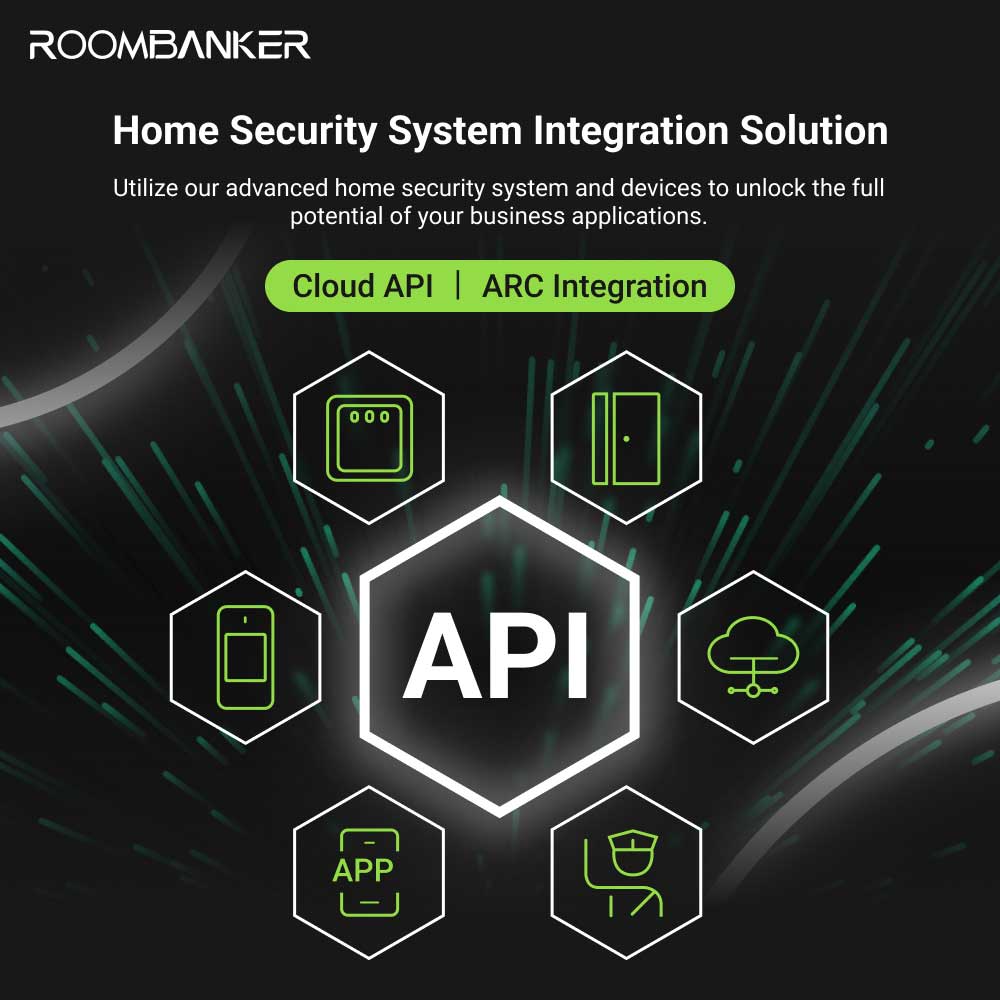
Enhance Security with Multiple Integration Ways and Advanced Encryption Methods
Roombanker offers three ARC integration methods: cloud server docking, IP receiver docking, and hub-to-ARC direct docking. This allows various ARC to adopt their preferred ways, creating great flexibility to enhance efficiency.
The secure communication between the intrusion alarm system and ARC should be paid high attention. And this communication is usually encrypted and authenticated, protecting sensitive data and preventing unauthorized access.
Improve Alarm Accuracy
Employ Multiple Advanced Detection Technologies
Combining multiple advanced detection technologies can significantly enhance the accuracy and decrease false alarm rates. For example, Roombanker’s PIR motion sensors can resist 2000Lux white light, support digital temperature compensation, and automatic sensitivity adjustments to minimize false alarms caused by environmental changes. Additionally, they are designed to be pet-immune, reducing false alarms triggered by pets.
Also read: what is pet-immune PIR sensor?
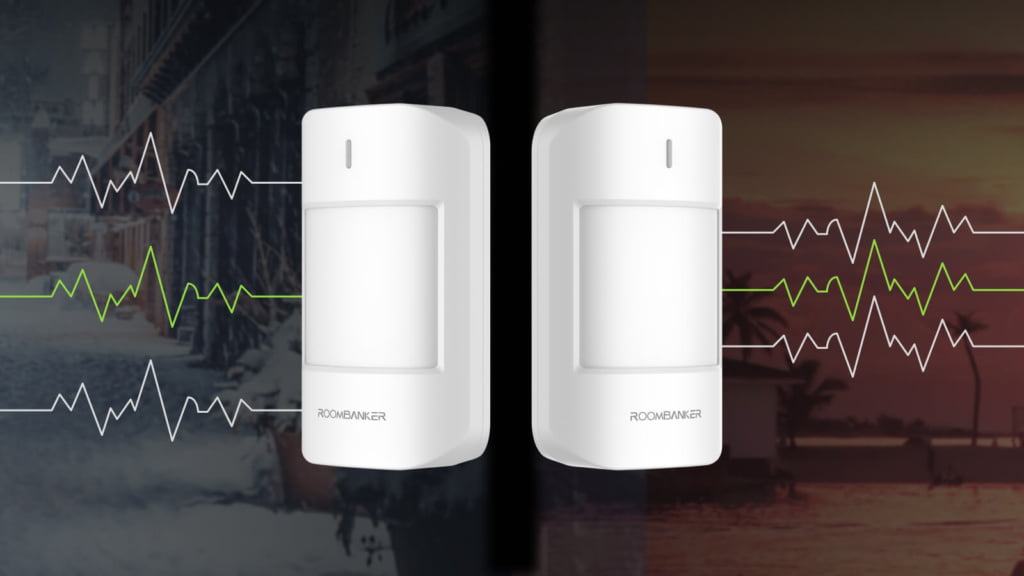
Video Verification
Incorporate CCTV visual verification is necessary for alarm systems, especially in some countries like Spain. Alarm equipment can use standalone CCTV or a combination of CCTV and PIR sensors. The combination allows CCTV to capture images or record videos only when the PIR sensor detects suspicious activity, protecting homeowner privacy and enabling ARC staff to perform secondary video verification.
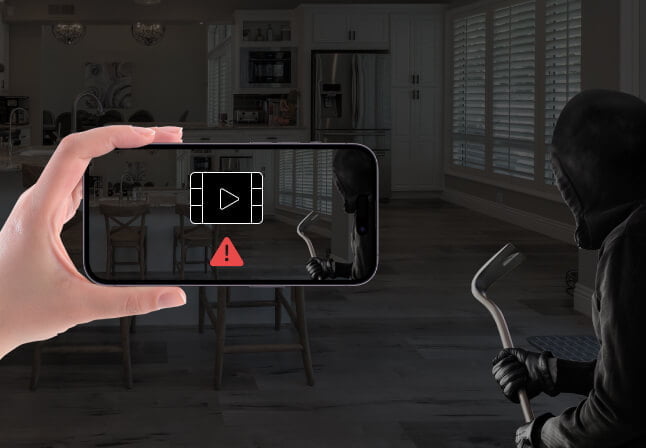
Prudential Alarm Sending Mechanism
Some alarm system may use a strict alarm information sending logic, such as triggering an alarm only when two detectors or sensors in a single zone are activated simultaneously, or when two zones are triggered simultaneously.
Ensure System Stability and Reliability
In terms of cases that a burglar or intruder may cuts the WiFi or wired network or power, Roombanker’s home security hub uses a network redundancy channels and power backup design. The hub supports triple network connection methods: WiFi, wired, and SIM card. If the WiFi or wired network is cut, the system automatically switches to the cellular backup network to send an alarm message, ensuring network stability. The hub is also equipped with a 2500mAh backup battery, providing 8 hours of stable operation even during a power outage or if power is cut by a thief.
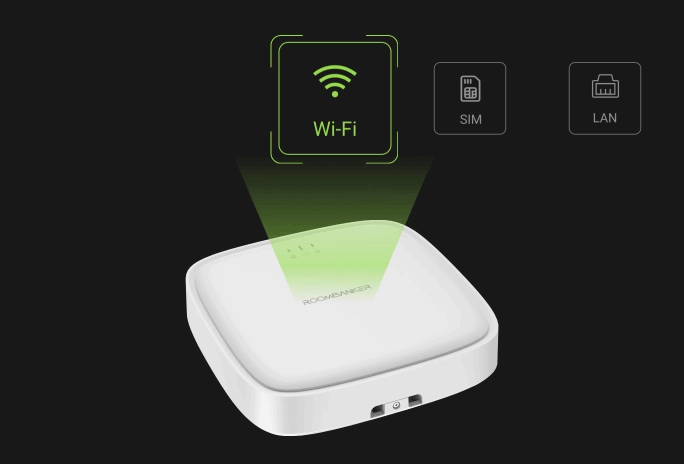
In case that homeowners may forget to check battery status, Roombanker detectors and sensors are designed for low power consumption, with standby power usage less than 2uA, and support low-battery reminders, ensuring long-term device stability. Our system also supports 50 channels of frequency modulation and spread spectrum technology, allowing automatic switching to clear channels if one is blocked, ensuring stable communication between the control panel and detectors. Additionally, our RBF wireless technology uses listen-before-talk technology to prevent data packet loss.
Easy-to-Maintain System
Roombanker system supports multiple message reminder types, including operation, fault, alarm, event, allowing real-time control of system dynamics.
Visual display of device status and the ability to query at any time.
Local storage of logs for quick querying and understanding of historical details.
By focusing on these areas, alarm system manufacturers can contribute to a more efficient and effective security ecosystem, benefiting both end-users and ARC providers.
Introducing Roombanker’s ARC Integration Solutions
Roombanker’s professional wireless security alarm system is designed with seamless ARC integration in mind. By adopting industry-standard protocols like Contact ID and SIA, we ensure compatibility with a wide range of ARC platforms. Additionally, our integration supports the development of custom protocols to meet the personalized needs of ARC partners.
More importantly, Roombanker alarm system employs encryption technology to ensure the efficiency, security, and stability of data interactions between the security system and ARCs, creating a trustworthy security environment for users.
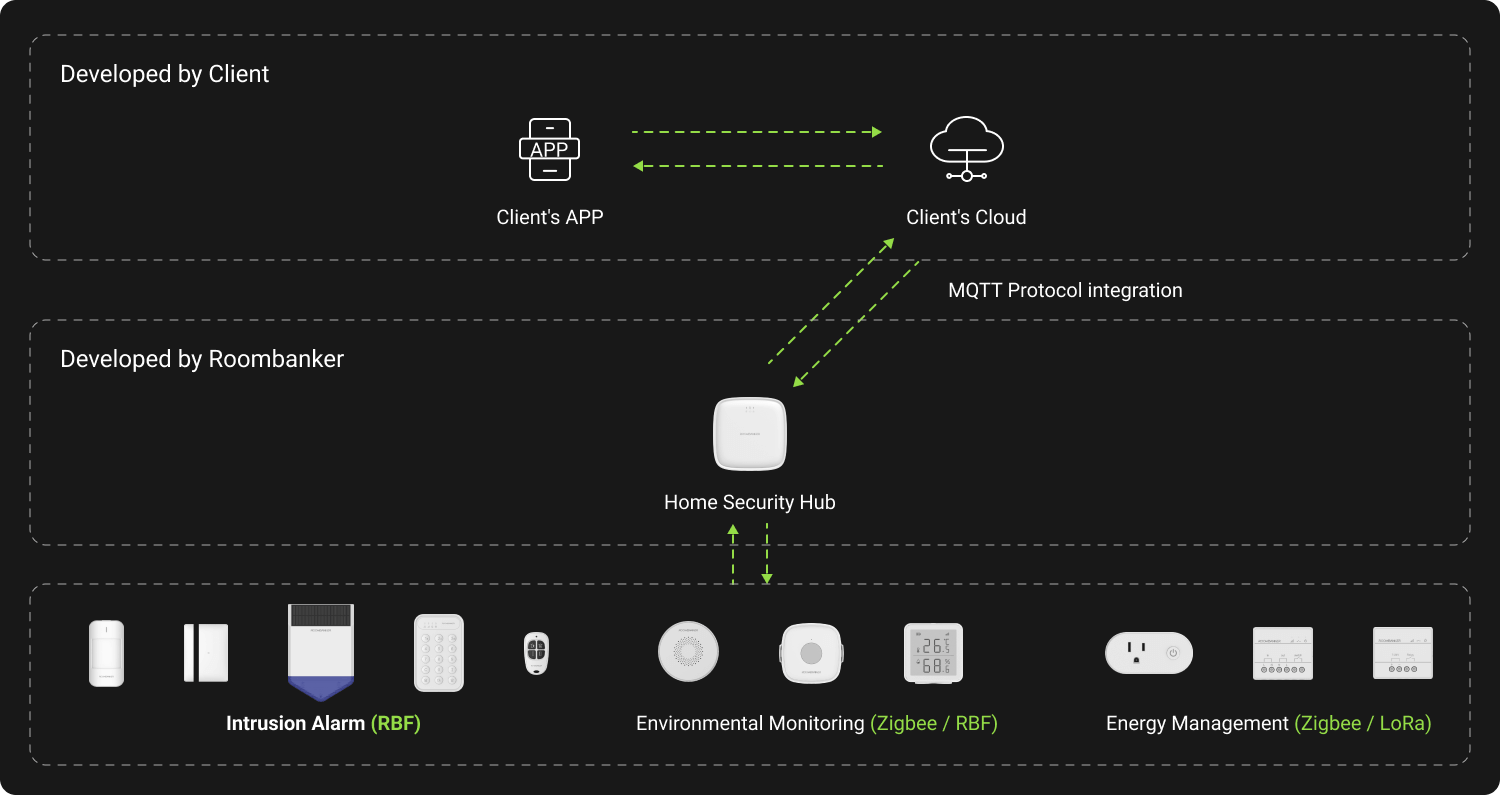
Roombanker is Looking For Strategic Intrusion/Burglar Alarm Partners
Roombanker is committed to creating a safer world through innovative security alarm solutions. As a reliable provider of smart home security systems, we are actively seeking partnerships with alarm system distributors, resellers, and ARC centers to expand our global reach.
We can provide complete security solutions tailored to diverse customer needs, combine our strengths to increase market penetration and expand our customer base, share knowledge and resources to develop innovative security products and services, and more. If you share our vision of a safer future, let’s join forces and create a win-win partnership.
